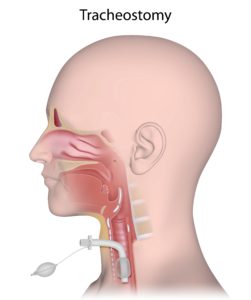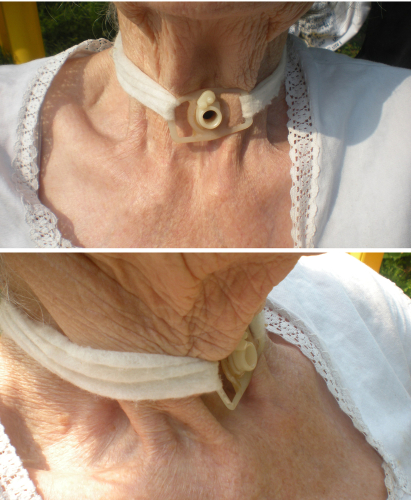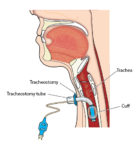 Tracheostomy patients are people who have had problems with their airway in the past, meaning a tracheostomy has had to be put in place. This could be due to things like cancer, trauma, or being in intensive care for a long period of time where the patient had to have assistance with their breathing. The patient will have a little stoma in the centre of the neck with a plug on top. Quite often, there will be a little shield to stop dust getting into the tracheostomy.
Tracheostomy patients are people who have had problems with their airway in the past, meaning a tracheostomy has had to be put in place. This could be due to things like cancer, trauma, or being in intensive care for a long period of time where the patient had to have assistance with their breathing. The patient will have a little stoma in the centre of the neck with a plug on top. Quite often, there will be a little shield to stop dust getting into the tracheostomy.
Uses of the Tracheostomy
The tracheostomy is a shortening of the airway. It allows oxygen to go through a hole in the neck and into the trachea. This allows oxygen to go straight into the lungs rather than through the upper airways. This is ideal when someone has had a problem in their upper respiratory problem, such as a tumour blocking the windpipe, or any trauma which has shut off the top of the trachea. Most tracheostomy patients can still breathe through their mouth and nose as well as the stoma in the neck. Some tracheostomies are permanent, but some are no longer needed. Therefore the stoma would be taken out and the hole would actually reheal itself shut.
Treatment and Maintenance
When involved in the resuscitation of someone with a tracheostomy, put one oxygen mask normally; another over the actual stoma. This is because there are now three points of entry for oxygen: The nose, the mouth, and the tracheostomy. Consequently, if you were performing rescue breaths during CPR and you had not covered the tracheostomy, the air you were blowing into the patient’s mouth would exit through the tracheostomy without entering the lungs.
Tracheostomies, because they are so close to the lungs, can get congested when you cough. They have to be maintained properly as it is possible to get water, dirt and dust into the stomas. It is their main airway; you have to ensure that that pipe is clear and clean, as you would treat the normal airway.
For more information on training courses, visit our “Courses” page which also includes our First Responder and First Person on Scene (FPOS) Courses.


Pingback: Stable angina is a very common problem in the UK
Pingback: UK Resuscitation Council and how it affects first aid training
Pingback: Guedal OP Airways or Oropharyngeal Airways are a simple airway adjunct